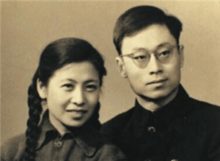Yu Min (physicist)

Yu Min (Chinese: 于敏; born 1926) is a prominent Chinese nuclear physicist, an academician of Chinese Academy of Sciences (CAS), and a recipient of Two Bombs, One Satellite Achievement Medal.[1]
He was born on August 1926 in Tianjin. He was famous for his excellent performances in Yaohua High School. Later he was admitted by Department of Electronics of Peking University, however, out of the passion for the physical theories, he turned into Department of Physics and made up his mind in working on the theory side.
From 1949, Yu started his postgraduate research in the Department of Physics of Peking University, and also served as a teaching assistant. In 1951, he became an assistant researcher and associate researcher at Modern Physics Institute of CAS, and began to study nuclear physics theory under the supervision of Peng Huanwu.
From the end of 1960, Yu was involved in the theoretical research of nuclear weapons. His major contributions included the solutions to a series of fundamental and critical theoretical problems of nuclear weapons, which led to breakthrough of hydrogen bomb.[2] He won the reputation and became the academician of Chinese Academy of Science for his design of H-bomb, called Yu Min Design (or Yu-Deng Design).
Early 1958, with China-Soviet National Defense Contract, Yu and his colleagues including Deng Jiaxian, Sun Yuzhang etc. moved to No.221 Factory near Lake Qinghaihu.
Until 1988, Yu's name remains the top secret of P.R. China. He was awarded the national top science award in January 2015.[3] With the 5 million CNY prize, Yu founded the Yu Min Foundation to support scientific development in China.